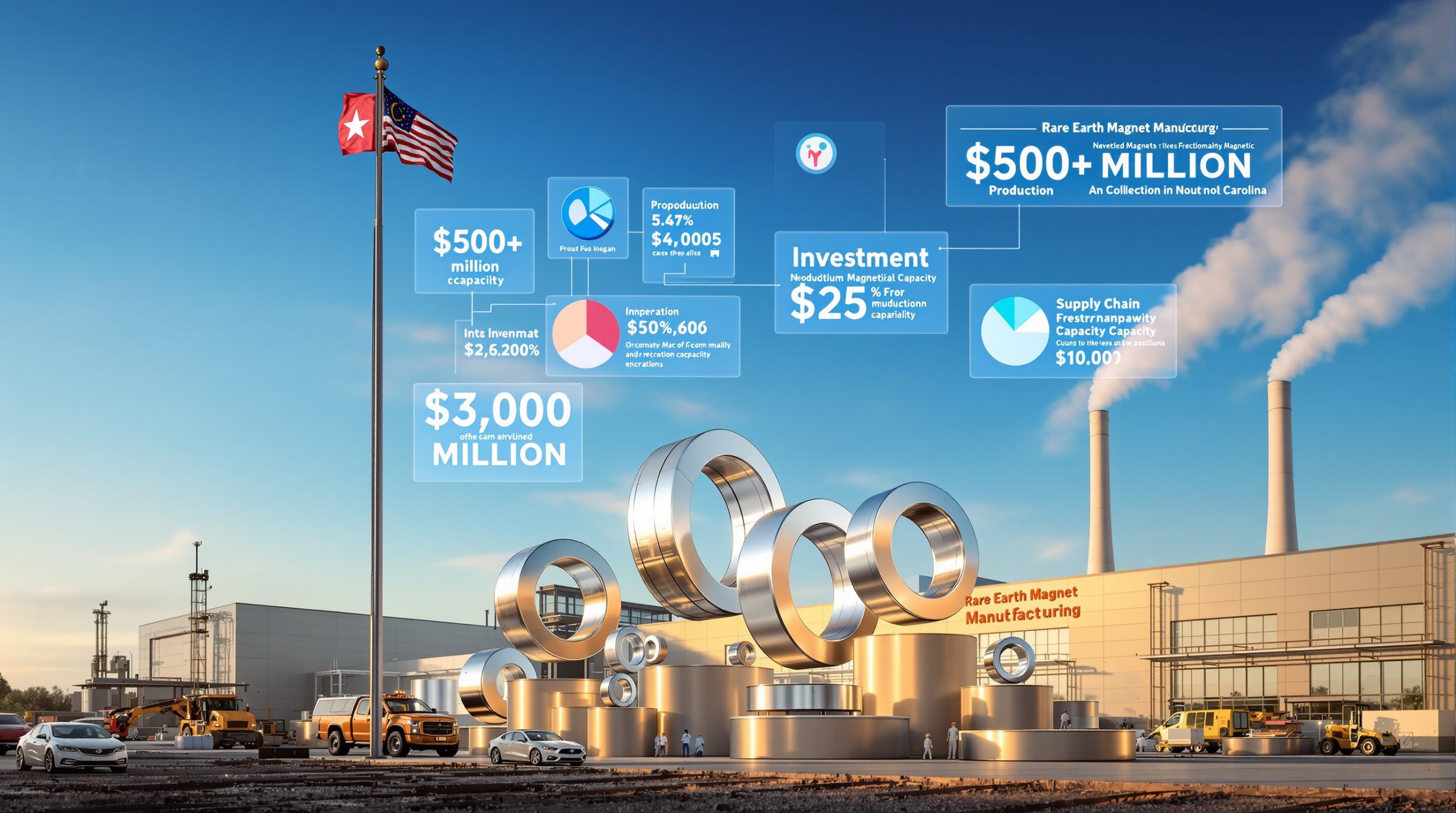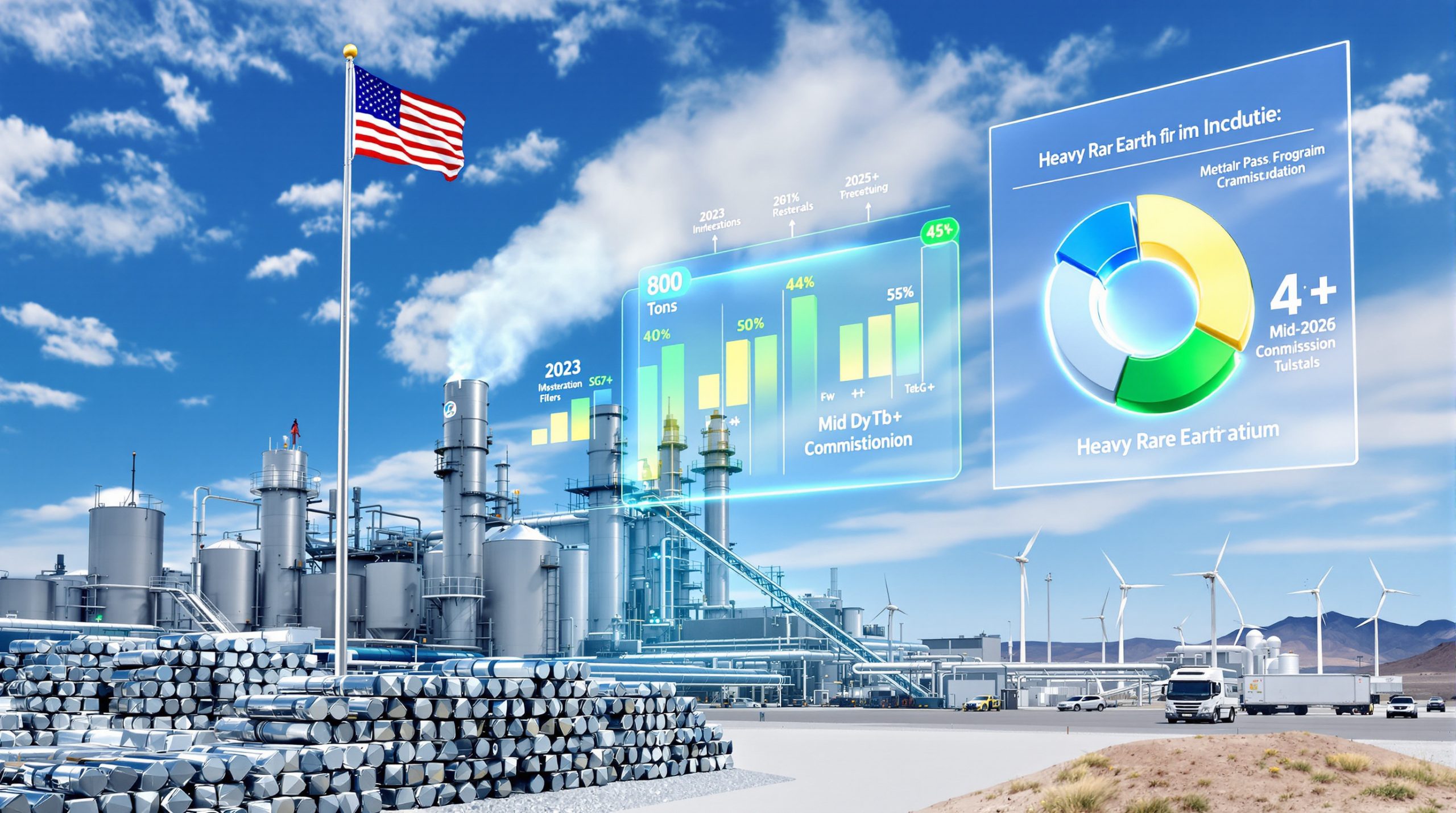Understanding the US Copper Tariff Announcement
On July 9, 2025, the United States announced plans to implement a significant 50% tariff on copper imports, expected to take effect by late July 2025. This move follows the administration's earlier protectionist measures, including the 25% tariff on steel and aluminum imports introduced in March 2025. The announcement came directly from US President Donald Trump, who stated simply: "Today, we're doing copper."
The copper tariff represents a significant escalation in trade policy, surpassing the steel and aluminum tariffs by implementing a rate twice as high. While the specific implementation mechanism hasn't been officially confirmed, trade analysts suggest it may follow the Section 232 security provision pathway used for previous metal tariffs.
Which Countries Will Be Most Affected?
Chile stands to bear the brunt of this decision, as the South American nation currently holds the position of top copper exporter to the United States. Chilean mines account for approximately 28% of global copper production, with a significant portion flowing to US markets for manufacturing and construction applications.
"The targeting of copper specifically represents a strategic pivot toward materials critical for energy transition technologies," notes Dr. Maria Vásquez, resource economics specialist at the University of Melbourne. "This creates both immediate disruption and long-term uncertainty in established supply chains."
Peru, the second-largest copper producer globally, will also face substantial impacts, while developing producers like the Democratic Republic of Congo and Indonesia may experience secondary market effects as global copper supply forecast adjusts to the new reality.
Australia's Current Copper Export Position
Australia's direct copper exports to the United States remain relatively modest compared to the mining sector's overall portfolio. According to the Australian Bureau of Statistics, these exports were valued at approximately $55 million in 2024, representing less than 1% of Australia's total copper exports.
This relatively small exposure to the US market provides Australia with a unique position—minimal direct vulnerability to the tariffs, yet significant potential to capitalize on shifting supply chains as major exporters face new barriers.
How Significant Is Copper to Australia's Mining Sector?
While iron ore and coal dominate Australia's mineral export values, copper has emerged as an increasingly strategic commodity within the national mining portfolio. Australia currently ranks as the world's sixth-largest copper producer, with output of approximately 870,000 tonnes annually.
The significance of copper extends beyond its current production volumes:
- Growing resource base: Australia holds an estimated 93 million tonnes of economic copper resources
- Strategic importance: Copper is designated as a critical mineral under Australia's Critical Minerals Strategy
- Value chain potential: Unlike some bulk commodities, copper offers substantial value-adding opportunities through refining and manufacturing
- Energy transition material: Copper demand is projected to grow significantly due to its essential role in renewable energy infrastructure
Australian copper operations are primarily concentrated in South Australia (Olympic Dam, Prominent Hill), Queensland (Mount Isa), and New South Wales (CSA Mine), with emerging projects in Western Australia and Victoria.
Potential Opportunities for Australian Mining
The implementation of tariffs on major copper exporters creates significant trade pattern disruptions that could benefit Australia's mining sector. As US buyers seek alternative suppliers or pay premium prices for Chilean copper, a cascading effect will likely occur across global markets.
"We anticipate a reshuffling of trade routes," explains mining analyst Sarah Johnson at Macquarie Group. "Chilean copper that previously went to the US may be redirected to Asian markets, potentially displacing some Australian shipments, which could then find new opportunities in markets seeking stable, tariff-free supply."
This disruption creates several strategic openings for Australian producers:
- Increased market share in non-US markets as Chilean producers redirect exports
- Premium pricing opportunities for reliable, politically stable supply
- New partnership opportunities with manufacturers seeking supply chain security
- Accelerated investment in Australian copper projects to meet shifting demand
What Strategic Advantages Does Australia Possess?
According to the Minerals Council of Australia (MCA), Australia has distinct competitive advantages in this new trade landscape:
- Political stability: Long history of reliable mineral exports without disruption
- Strong ESG credentials: Higher environmental and governance standards than many competing producers
- Established trade relationships: Free trade agreements with major Asian economies
- Advanced mining technology: Higher productivity and safety standards
- Comprehensive geological data: Well-mapped resources with established reserve estimates
These advantages position Australia as what the MCA terms a "trusted, low-risk partner" for critical minerals and resources—a positioning that aligns perfectly with growing global concerns about supply chain security and resilience.
"Countries and companies are increasingly willing to pay a premium for supply certainty," notes resources consultant Michael Davidson. "Australia's reputation for reliability becomes a tangible commercial advantage in uncertain market conditions."
Industry Response to the Tariff Announcement
The MCA has expressed support for the Australian Government's focus on strengthening economic resilience and diversifying export markets in response to the tariff announcement. Tania Constable, CEO of the MCA, emphasized that Australia has an opportunity to "step forward deepening and securing supply through trade partnerships, expanding export markets, and reinforcing our position in global supply chains."
This response reflects the industry's recognition that while direct exports to the US remain limited, the broader market disruption presents strategic opportunities. The MCA has called for:
- Acceleration of permitting for new copper projects
- Investment in copper processing capabilities
- Enhanced trade promotion in key markets
- Strategic minerals partnerships with allied nations
How Could This Impact Investment in Australian Mining?
The tariff situation could potentially drive increased investment in Australian copper projects as global buyers seek more stable supply sources. This investment impact would likely manifest in several ways:
- Accelerated development timelines for projects already in the pipeline
- Increased exploration budgets targeting copper deposits
- Foreign investment interest from manufacturers seeking supply security
- Joint venture opportunities with international mining companies
Several Australian copper projects could see increased investor interest, including:
- BHP's Olympic Dam expansion plans
- OZ Minerals' West Musgrave project
- Newcrest's Red Chris development
- Sandfire Resources' DeGrussa successor operations
Industry analysts estimate that over $5 billion in copper investment strategies could be accelerated by 12-24 months if market conditions remain favorable in response to the tariff situation.
Government Response and Policy Implications
Australian Federal Treasurer Jim Chalmers has confirmed that the government is "urgently seeking" clarity on whether Australia would be affected by the tariffs. This indicates the seriousness with which the government is treating the announcement and its potential implications for the Australian economy.
The government's immediate focus appears to be on securing an exemption, similar to the temporary exclusions Australia negotiated during previous US metal tariff implementations. However, the administration is simultaneously developing contingency plans to support the mining sector regardless of exemption status.
What Policy Changes Might Result?
The tariff situation could accelerate several government initiatives that were already under consideration:
- Critical Minerals Processing Fund expansion with specific copper focus
- Export Finance Australia mandate extensions for copper project financing
- Northern Australia Infrastructure Facility prioritization of copper-related infrastructure
- Resources diplomacy initiatives targeting non-US markets
- Mining innovation grants focusing on copper extraction efficiency
"The government's response will likely be two-pronged," explains Dr. Robert Chen, resource policy specialist at the Australian National University. "They'll pursue exemptions while simultaneously investing in making Australian copper more competitive globally, regardless of US market access."
Global Supply Chain Implications
The implementation of such significant tariffs is likely to cause substantial restructuring of global copper supply chains. Buyers in the US may seek alternative sources or pay higher prices, while copper originally destined for the US market may be redirected to other markets, potentially affecting global pricing dynamics.
This restructuring could manifest through several mechanisms:
- Price arbitrage opportunities between US and non-US markets
- Transshipment schemes attempting to circumvent country-of-origin rules
- Accelerated vertical integration by manufacturers seeking supply security
- Stockpiling behavior in anticipation of further trade disruptions
What Does This Mean for Global Copper Prices?
The tariff could create a two-tier pricing system, with US domestic prices potentially rising by 25-40% (not the full 50% due to elasticity factors) while global prices experience more complex adjustments. Commodity analysts project several likely scenarios:
- Short-term volatility as markets process the disruption
- US price premium developing as imports become more expensive
- Regional price differentials based on supply/demand imbalances
- Long-term upward pressure on global prices if production shifts to higher-cost regions
"We're likely to see the emergence of a 'US premium' for copper similar to what occurred with aluminum after the 2018 tariffs," explains commodities strategist Jennifer Wu at Goldman Sachs. "This creates both challenges and opportunities depending on where you sit in the value chain."
For Australian producers, this price complexity offers potential advantages in negotiating term contracts with buyers seeking stability in an increasingly fragmented market. The copper price insights suggest significant shifts in pricing patterns over the coming year.
Long-Term Strategic Considerations
The tariff situation reinforces the importance of Australia's existing critical minerals strategy, which aims to position the country as a reliable supplier of materials essential for clean energy technologies and other strategic applications. Copper's increasing importance in electrification makes it a central element of this strategy.
Australia's critical minerals approach focuses on several strategic objectives that align well with the new copper market trends:
- Moving up the value chain through increased domestic processing
- Diversifying export markets to reduce dependency on any single buyer
- Integrating into allied supply chains through strategic partnerships
- Leveraging ESG advantages for premium positioning
- Building processing capabilities that capture more economic value
What Investment Opportunities Could Emerge?
The disruption could accelerate investment in Australian copper processing capabilities, potentially creating opportunities to capture more of the value chain within Australia rather than simply exporting raw materials. This aligns with broader government objectives to increase domestic value-adding activities.
Specific opportunities include:
- Copper smelting capacity expansion at existing facilities
- New refining operations producing higher-purity cathode copper
- Downstream manufacturing for copper components in renewable technologies
- Copper recycling infrastructure to supplement primary production
- Research facilities focused on extraction efficiency and processing innovation
"Australia has historically exported most copper as concentrate," notes resources economist Dr. James Wilson. "This market disruption creates the business case for more domestic value-addition, particularly for projects that can align with renewable energy objectives."
FAQ: US Copper Tariffs and Australian Mining
Will Australian Copper Exports Be Exempt From the Tariffs?
The Australian government is currently seeking clarity on whether Australian exports will be subject to the tariffs. Historical precedent with steel and aluminum tariffs suggests exemptions for close allies are possible, but no official determination has been announced.
Several factors support the possibility of an Australian exemption:
- Security alliance status through AUKUS and ANZUS frameworks
- Precedent of steel/aluminum exemptions in previous trade actions
- Limited direct market impact due to Australia's small US market share
- Critical minerals cooperation frameworks already established
However, exemption is not guaranteed, and the administration has signaled a broader approach to trade policy than in previous actions. The ASX copper stocks impact from this uncertainty has been notable in recent trading sessions.
How Quickly Could Australia Increase Copper Production?
Expanding copper production capacity requires significant lead time for permitting, construction, and commissioning of new operations. While existing operations might be able to marginally increase output in the short term, substantial production increases would likely take several years to materialize.
Realistic timelines for production increases include:
- Short-term (6-12 months): 5-10% increase through operational optimization
- Medium-term (1-3 years): 15-25% increase through brownfield expansions
- Long-term (3-7 years): 30-50%+ increase through new project development
The most immediate opportunities lie with projects already in advanced development stages, such as OZ Minerals' Carrapateena expansion and BHP's Olympic Dam optimization programs, where existing infrastructure and permits allow for faster scaling.
What Other Critical Minerals Could Face Similar Tariffs?
While the current announcement focuses specifically on copper, the strategic rationale could potentially extend to other critical minerals essential for clean energy technologies and national security applications. Mining companies with diversified portfolios across multiple critical minerals may be better positioned to navigate potential future tariff actions.
Minerals that share copper's strategic characteristics and could face similar trade measures include:
- Nickel: Essential for batteries and stainless steel
- Cobalt: Critical battery component with concentrated supply
- Rare Earth Elements: Essential for permanent magnets in motors and generators
- Lithium: Key battery material with growing strategic importance
- Manganese: Battery and steel additive with concentrated production
"The focus on copper likely represents the beginning rather than the end of strategic trade measures targeting critical minerals," warns geopolitical analyst Dr. Sarah Johnston. "Companies should prepare for a more fragmented global trade landscape across the minerals complex."
Future Outlook for Australian Copper
Australia's copper sector has significant growth potential, with several major projects in development or expansion phases. The tariff situation could potentially accelerate investment decisions for these projects if it creates more favorable market conditions for Australian producers.
According to the Department of Industry's Resources and Energy Quarterly, Australian copper production is projected to grow from the current 870,000 tonnes annually to approximately 1.1 million tonnes by 2030 based on projects already in development. This growth trajectory could accelerate under favorable market conditions.
Key projects driving this growth include:
- Olympic Dam Expansion (BHP): Potential production increase of 75,000-100,000 tonnes annually
- Carrapateena Expansion (OZ Minerals): Additional 40,000-50,000 tonnes annually
- West Musgrave (OZ Minerals): New production of 30,000 tonnes annually
- Hillside (Rex Minerals): Potential new production of 35,000 tonnes annually
- Mount Isa Underground Expansion (Glencore): Extended mine life with stable production
How Might This Affect Australia's Position in Global Copper Markets?
While Australia is not currently among the top global copper producers, the combination of significant resources, political stability, and strong environmental and social governance frameworks positions it well to potentially increase its market share in an environment where security of supply is increasingly valued.
Australia's competitive positioning could strengthen through several mechanisms:
- Premium pricing for reliable supply from stable jurisdiction
- Strategic offtake agreements with manufacturers prioritizing supply security
- Investment inflows seeking stable mining jurisdictions
- Policy support from government initiatives targeting critical minerals
- ESG advantages as buyers increasingly factor sustainability into sourcing decisions
"The global copper market is entering a period of structural change driven by both supply disruptions and accelerating demand from energy transition," explains resources analyst Michael Chen. "Australia's combination of geological potential and jurisdictional advantages creates a rare opportunity to significantly enhance its position in the global copper value chain."
For investors, mining companies, and policymakers, the US tariff announcement represents not just a trade disruption but a potential catalyst for strategic repositioning of Australia's copper sector in global markets.
Want to Capitalise on the Next Major Mineral Discovery?
Stay ahead of the market with Discovery Alert's proprietary Discovery IQ model, which instantly notifies investors of significant ASX mineral discoveries and transforms complex mineral data into actionable insights. Understand why historic discoveries can generate substantial returns by visiting Discovery Alert's dedicated discoveries page and begin your 30-day free trial today.




